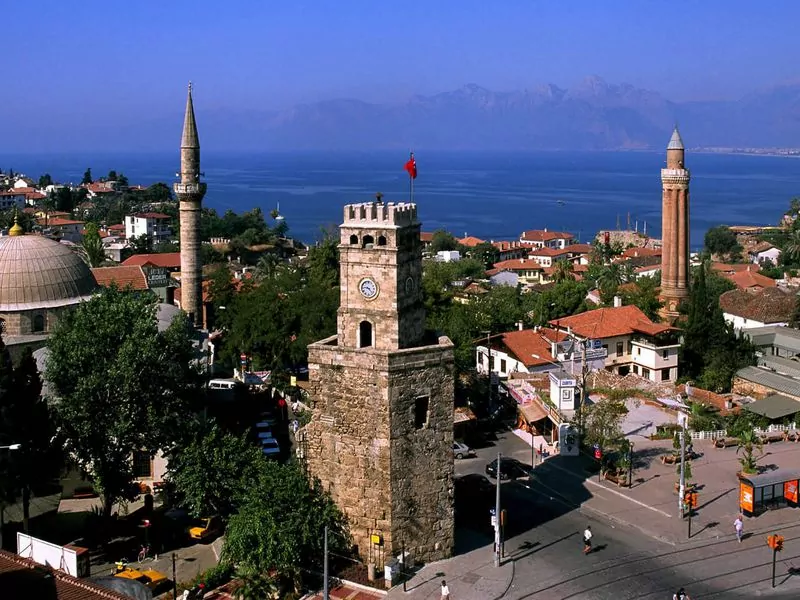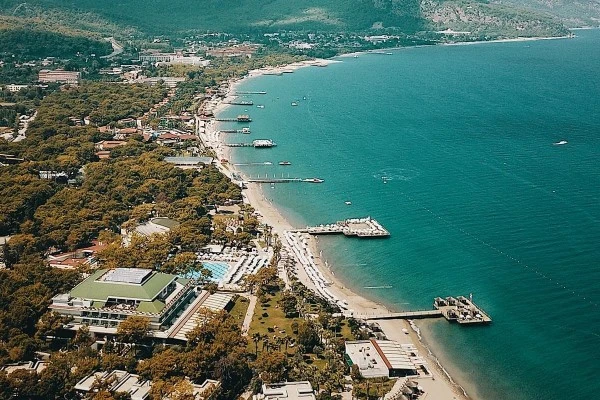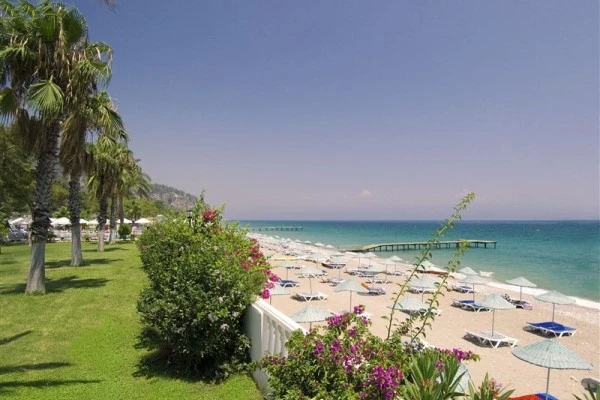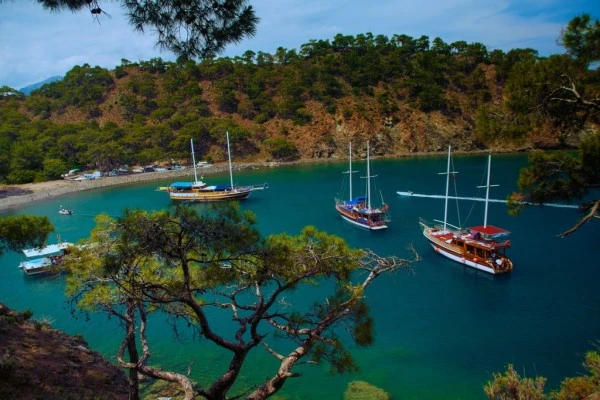
Discover the old town of Antalya

Kaleiçi is positioned with horseshoe-shaped inner and outer walls, most of which have been demolished and destroyed. The walls are the combined work of Hellenistic, Roman, Byzantine, Seljuk and Ottoman periods. The walls have 80 bastions. There are about 3000 houses with tiled roofs inside the walls. The architecture of the houses not only gives an impression of Antalya's building history, but also reflects the best way of life, traditions and customs of the region.
The Kaleici district, resembling a maze, is built for sightseeing.
Immaculately restored, whitewashed, red-roofed Ottoman mansions line the cobbled streets, which are now home to countless boutique hotels, souvenir shops, art galleries and restaurants.
Although it's more of a place to breathe in the old-world vibe, there are also plenty of small attractions for those wanting to explore the area.
The main square has a castle gate and stone-clad clock tower, while the 18th-century Tekeli Mehmet Pasha Mosque is worth seeing for its intricate interior tiling.
Antalya, meaning home of Attalos, II. It was founded by Attalus. The city, which remained independent for some time after the end of the Kingdom of Pergamum (133 BC), later fell into the hands of pirates. 77 BC It was annexed to Roman territory by the commander Servilius Isauricus. v. It was the basis for Pompey's pardon in AD 67. We found Hadrian's visit to Attaleia in AD 130. where the city was. Attaleia, whose name was considered a bishop's seat during the Byzantine culture, experienced great development after it fell to the Turks. Since the modern city is hidden on top of an old fence, there are very few ancient ruins in Antalya. The first visible remains are part of the pier known as the Old Harbor and the harbor wall. Hadrian's Gate restored in the parking lots of the walls is one of the most beautiful ancient parts of Antalya.
Antalya's old town is protected by two thick, horseshoe-shaped walls. One of these fortress-shaped walls is in the sea bay and the other has land sides. In addition to these walls, there are also walls separating the various settlements, and there is a tower at about fifty points on the outer walls. The history of the construction of these walls dates back to ancient times. The Romans laid the foundations for these Hellenistic walls, and the Seljuks expanded and repaired them.
Many stone blocks with old inscriptions were used to build the walls, which are very well preserved until the 19th century. Today only the remains of the walls such as Hıdırlık Tower, Hadriyan Gate and Clock Tower can be found in the city. The old town and the walls covered by the sea are now called Kaleiçi. Streets and buildings are still covered with signs in the days when Antalya passes by. The decoration of the houses not only gives an impression of the building history of Antalya, but also of the way of life, customs and customs of the region and living habits in the best possible way.
The narrow streets inside the walls are those that run up the walls from the port. The Yivli Minaret, Keyhusrev Madrasah, Karatay Madrasah, Iskele Mosque and Tekeli Mahmut Pasha Mosque are some of the most important historical monuments within the city walls. The last glimpse of the marina, the breath of the old town day and night, has inspired international painters, poets and writers.
Antalya Kaleiçi is bounded on the west by the North Sea, on the east by the main streets and the city walls running parallel to these streets, some of which still exist today. With these clear border thresholds, Kaleiçi has been spared from the layered structure of the city center and the traditional texture has been authentically preserved and lived to this day.
The texture of Kaleiçi settlement was formed in two different ways, with the central city wall stretching along Cami Sokak and Hıdırlık streets. The area between Cumhuriyet Street and these Sakaklar has been organically developed in accordance with the topography and city walls. The blocks between the streets are not regular. It is a variable of expansion and expansion in the islands. The area that stretches from the central city wall to Karaalioğlu Park and where the outer walls end with the Hıdırlık Tower is structured like a lattice. The building blocks are mostly neatly crossed out. In both textures, one of the facades of the houses is attached, while the other opens onto the garden. The layout of the streets is not regular. The ground floor leaves behind urban planning plans. The carvings not only enrich the floor plan of the house, but also form intricate facades, streets and small squares.
Select your language
Select your currency


